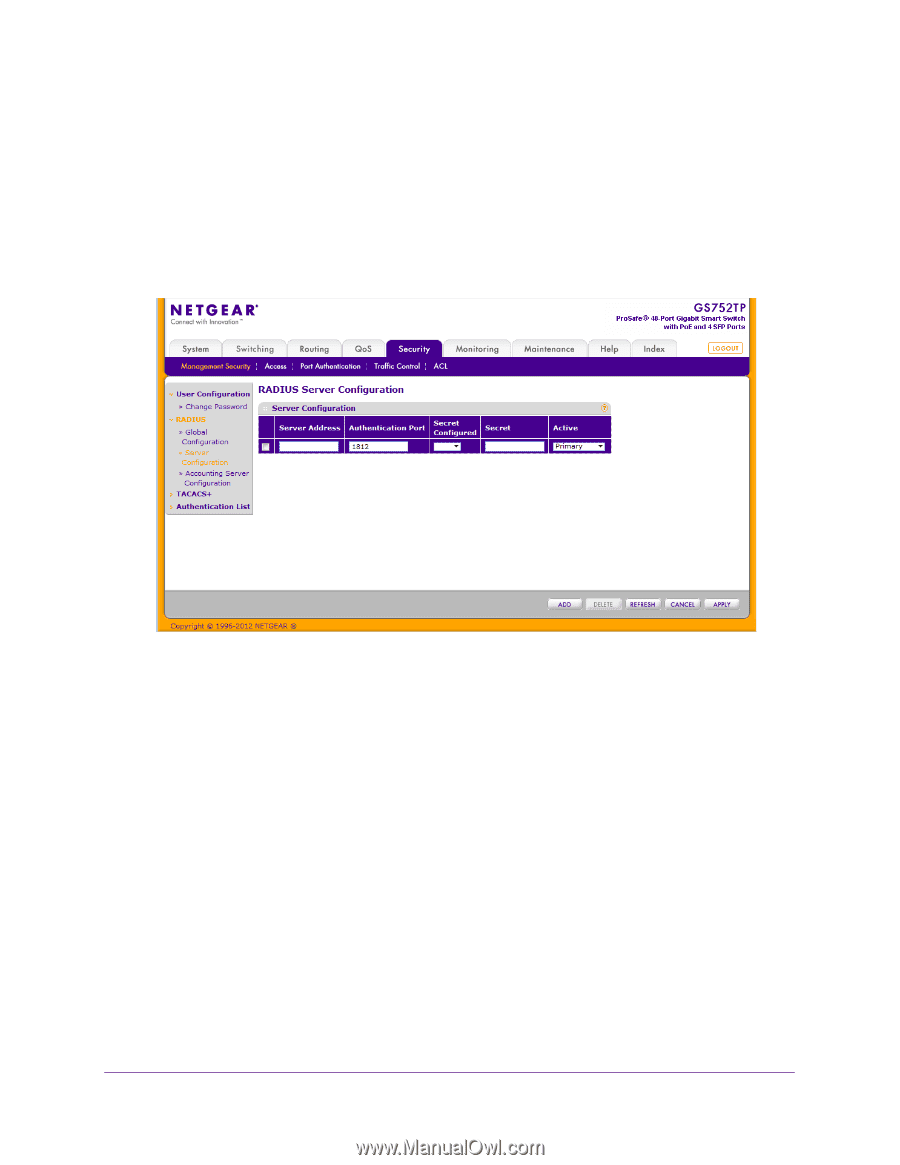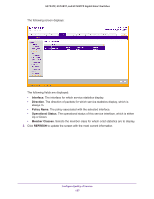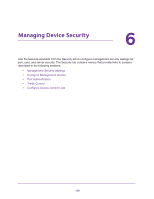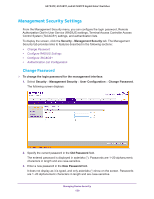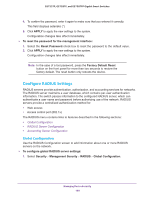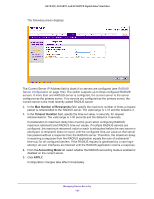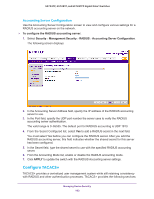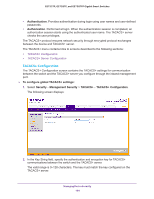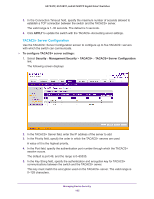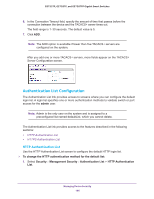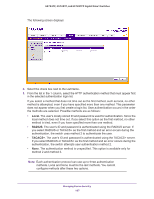Netgear GS752TP GS728TP/GS728TPP/GS752TP Software Administration Manual - Page 162
RADIUS Server Configuration, To con a RADIUS server for authentication and authorization
 |
View all Netgear GS752TP manuals
Add to My Manuals
Save this manual to your list of manuals |
Page 162 highlights
GS752TP, GS728TP, and GS728TPP Gigabit Smart Switches RADIUS Server Configuration Use the RADIUS Server Configuration screen to view and configure various settings for the current RADIUS server configured on the system. To configure a RADIUS server for authentication and authorization: 1. Select Security Management Security > RADIUS Server Configuration. The following screen displays: 2. In the Server Address field, specify the IP address of the RADIUS server to add. 3. In the Authentication Port field, specify the UDP port number the server uses to verify the RADIUS server authentication. The valid range is 0-65535. The default port for RADIUS authentication is UDP 1812. 4. From the Secret Configured menu, select Yes to add a RADIUS secret in the next field. You must select Yes before you can configure the RADIUS secret. After you add the RADIUS server, this field indicates whether the shared secret for this server has been configured. 5. In the Secret field, type the shared secret text string used for authenticating and encrypting all RADIUS communications between the switch and the RADIUS server. This secret must match the RADIUS encryption. 6. From the Active list, specify whether the server is a primary or secondary server. 7. Click ADD. Configuration changes take effect immediately. To modify settings for a RADIUS server that is already configured on the switch, select the check box next to the server address field, update the desired fields, and click APPLY. Managing Device Security 162
